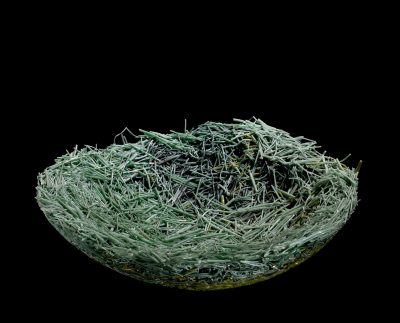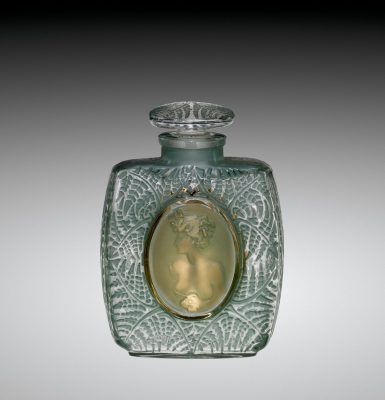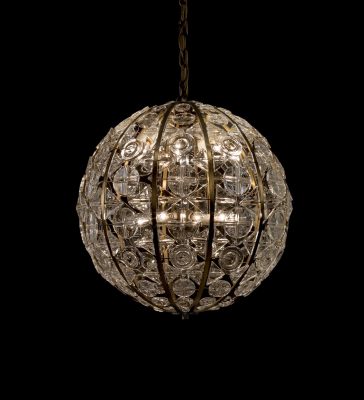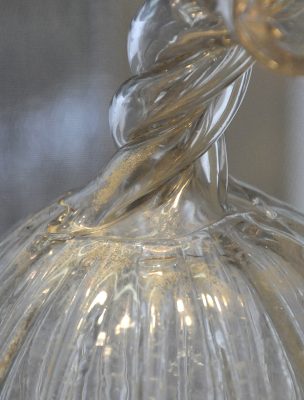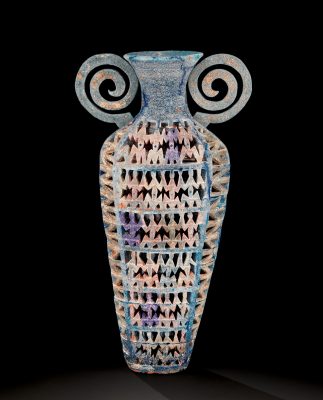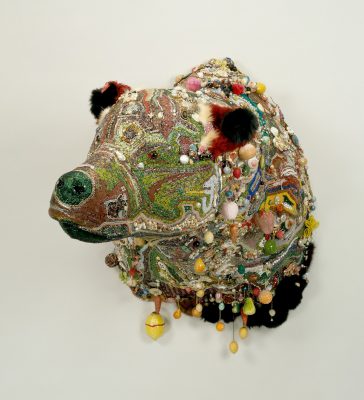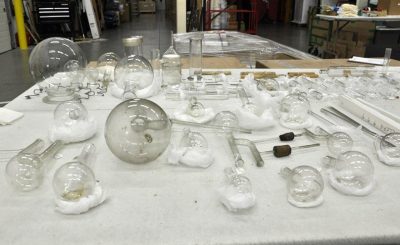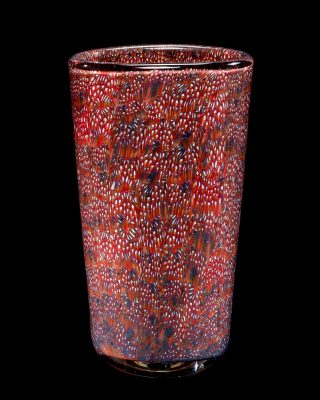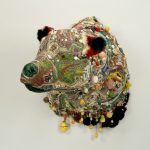
Cleaning objects in the collection is an important part of their care. Dusting and light cleaning (which can be a challenge itself; read about it in this recent blog post, Maintaining the shine) is usually done by the preparators, while the more complete and complicated cleanings are done by the conservators. Most objects will only need to be cleaned by the conservators once after entering the museum’s collection. Read more about how and why we clean our glass in this previously published blog post about Washing Glass.
Here are 10 of the most difficult cleaning challenges found in the glass collection (click on each image for descriptions):
- Bottle (55.1.74): Archaeological objects, like this Roman bottle, often have very fragile surfaces because of weathering, a type of deterioration of the surface of glass caused by burial. The surface can become so deteriorated that it flakes off even with gentle handling, this means that the usual cleaning techniques could be very damaging and can’t be used. Luckily, these objects don’t need to be cleaned often. Read more about Weathered Archaeological Glass.
- Clipped Grass (82.4.72): This piece and similar works by Toots Zynsky are made with applied glass threads that stick up and out making it easy for brushes to get caught during cleaning. Extreme care needs to be used to release the brush hairs without breaking the thin glass threads. © Toots Zynsky
- Fougères (Ferns) (2011.3.298): Many of the objects designed by Rene Lalique, like this one, have water sensitive patinas on the surface which are difficult to clean because water can’t be used and the surfaces are easily abraded. Where there is no patina, the glass can be carefully wet cleaned with brushes or swabs, but the areas with patina can only be cleaned with dry techniques. Gift of Elaine and Stanford Steppa; © Rene Lalique
- “Crystal Sphere” Chandelier (2012.3.25): Made by the Orrefors company between 1963-1967, this object was difficult to clean in part because of its large size (it’s maximum diameter is 61 cm or just over 2 feet) and its shape. The closed form makes the interior difficult to access and there is no way to safety rest it on a table, so it had to be suspended during the cleaning process. © Orrefors Glasbruk
- Flood mud: The flood that hit Corning in 1972 left behind a very fine mud that is still found on some objects today. It’s very difficult to remove because it is so fine and gets stuck in all the tiny nooks and crannies on the glass, like on the inside of this Kuttrolf (51.3.235). Soaking and fine brushes can help loosen the mud particles, but sometimes nothing works.
- Grecian Urn (2006.4.150): The surface of Pâte de Verre pieces like this one by Karla Trinkley are often rough and pitted which means dirt and grime can easily get stuck making cleaning more difficult. Brushes and poultices can help get the dirt out, but not always. © Karla Trinkley
- Screen Panel (2010.6.26): This glass rod panel is made up of two rectangular sheets of assembled thin glass rods with painted paper cutouts sandwiched between them and held together at the edges with paper tape. Years of gathering dirt left the panel filthy. Most of the 28½-hour treatment was spent on cleaning the glass surfaces with cotton balls dampened with saliva and a water/ethanol mixture. Saliva is often used in conservation because it has enzymes which help dissolve and pick up dirt. Because of its viscosity, saliva also wets the object less than more fluid solvents like water. Read more about this object in a previous blog post. Transfer from The Rakow Library.
- Big Bear (98.4.16): It took two conservators 16 hours over several weeks to clean this sculpture by Sherry Markovitz, which is made from glass beads as well as found objects, fur, and fabric. Gift of the Ben W. Heineman, Sr. Family; © Sherry Markovitz
- Stubborn stains and long, narrow shapes that limit access to the inside make the museum’s collection of historic scientific labware difficult to clean.
- Murrine Mosaic Vase (58.3.12): Venetian glass from the mid-20th century, like this piece by Paolo Venini, often has a somewhat unstable composition which means that the objects tend to get a buildup of alkalis on the surface making the surface slippery. The combination of the slippery surface and the often large size and heaviness of these objects make them difficult to handle while cleaning. Gift of Venini.


